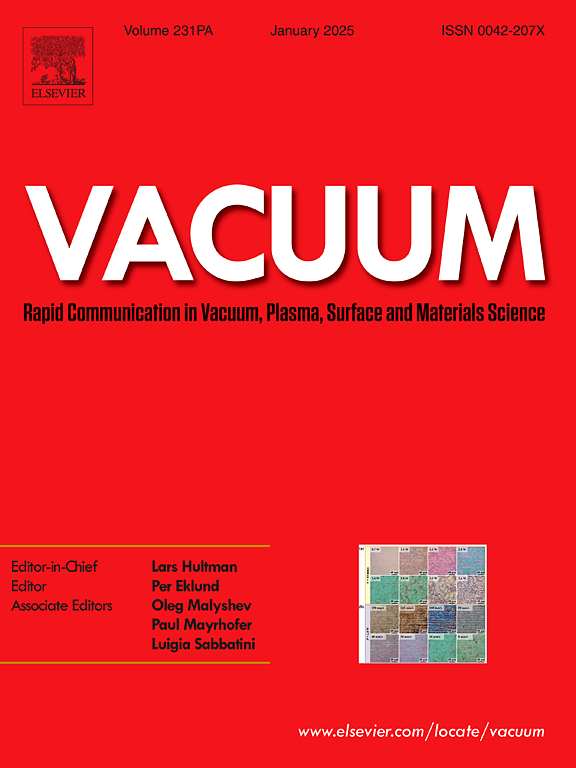基于纳米层状结构的超高强度Cu-10Fe-0.2Mg原位复合材料
IF 3.9
2区 材料科学
Q2 MATERIALS SCIENCE, MULTIDISCIPLINARY
引用次数: 0
摘要
Cu-Fe原位复合材料在铁长丝达到纳米尺度时面临Hall-Petch强化饱和。本研究通过“纳米层状结构中的超纳米沉淀”策略解决了这一限制。通过在Cu- 10fe合金中添加0.2 wt%的Mg,并进行多阶段热机械加工,制备了Cu- 10fe -0.2Mg原位复合材料,其超细CuMg2纳米沉淀物(~ 6.8 nm)嵌入Cu纳米层状基体中。与无镁材料相比,这种优化材料的强度提高了23%,同时保持了96%的基本导电性和相当的均匀伸长率。其力学性能的改善可归因于引入的CuMg2纳米沉淀物的Orowan强化效应及其促进加工硬化的能力。这种纳米层内的超纳米沉淀策略被设想为很容易适用于其他Cu-bcc原位复合材料,为下一代材料工程提供广泛的影响。本文章由计算机程序翻译,如有差异,请以英文原文为准。
Ultrahigh-strength Cu-10Fe-0.2Mg in situ composites via ultra-nano precipitation within nanolamellar architectures
Cu-Fe in situ composites face Hall-Petch strengthening saturation when Fe filaments reach nanoscale dimensions. The present study addresses this limitation through a strategy of “ultra-nano precipitation within nanolamellar architectures”. By adding 0.2 wt% Mg to a Cu-10Fe alloy and applying multi-stage thermo-mechanical processing, a Cu-10Fe-0.2Mg in situ composite was developed, featuring ultrafine CuMg2 nanoprecipitates (∼6.8 nm) embedded in the Cu nanolamellar matrix. This optimized material achieves a 23 % strength enhancement compared to its Mg-free counterpart, while retaining 96 % of the base conductivity and comparable uniform elongation. The improvement in mechanical properties can be attributed to the Orowan strengthening effect from the introduced CuMg2 nanoprecipitates and their ability to promote work hardening. This ultra-nano precipitation within nanolamellae strategy is envisaged to be readily adaptable to other Cu-bcc in situ composites, offering broad implications for next-generation material engineering.
求助全文
通过发布文献求助,成功后即可免费获取论文全文。
去求助
来源期刊

Vacuum
工程技术-材料科学:综合
CiteScore
6.80
自引率
17.50%
发文量
0
审稿时长
34 days
期刊介绍:
Vacuum is an international rapid publications journal with a focus on short communication. All papers are peer-reviewed, with the review process for short communication geared towards very fast turnaround times. The journal also published full research papers, thematic issues and selected papers from leading conferences.
A report in Vacuum should represent a major advance in an area that involves a controlled environment at pressures of one atmosphere or below.
The scope of the journal includes:
1. Vacuum; original developments in vacuum pumping and instrumentation, vacuum measurement, vacuum gas dynamics, gas-surface interactions, surface treatment for UHV applications and low outgassing, vacuum melting, sintering, and vacuum metrology. Technology and solutions for large-scale facilities (e.g., particle accelerators and fusion devices). New instrumentation ( e.g., detectors and electron microscopes).
2. Plasma science; advances in PVD, CVD, plasma-assisted CVD, ion sources, deposition processes and analysis.
3. Surface science; surface engineering, surface chemistry, surface analysis, crystal growth, ion-surface interactions and etching, nanometer-scale processing, surface modification.
4. Materials science; novel functional or structural materials. Metals, ceramics, and polymers. Experiments, simulations, and modelling for understanding structure-property relationships. Thin films and coatings. Nanostructures and ion implantation.
 求助内容:
求助内容: 应助结果提醒方式:
应助结果提醒方式:


